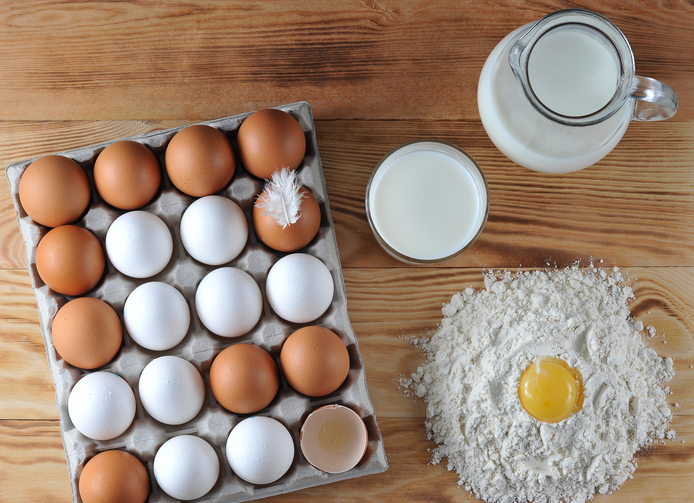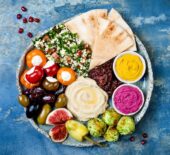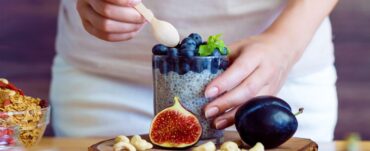SARS-CoV-2, commonly referred to as COVID-19 has changed the world we live in. The most effective way to reduce the severity of this viral infection is through vaccination and safe practices like wearing a mask, hygiene practices and physical distancing.
Not a lot is known about the effects of nutrition and the influence this may have on the severity of COVID-19, this may be about to change. New research is proposing iodine may have a positive effect in reducing the severity of symptoms and rate of transmission among people.
COVID-19 is a virus which enters your lungs. One type of glycoprotein group which is found in your airways and in your saliva is called Lactoperoxidase (LPO). This group is responsible for inactivating foreign microorganisms from your body and as much is essential for a normal functioning immune system.
When iodine is present LPO forms a complex system of reactions called the duox-LPO system. The duox-LPO system ultimately results in a product called hypoiodite (IO−). IO- is lethal to viruses of the respiratory tract as it works as a potent, non-specific microbial agent. The duox-LPO system is considered a first line of defense for your body against respiratory virus infections.
Researchers have noted the COVID-19 rates in Japan are low, despite the populated islands with close contact, there have been no strictly enforced lockdowns. When there is increased iodine present in the airways there has been an observed increase in the effectiveness of the duox-LPO system and its ability to destroy viruses.
The Japanese Diet is known to be rich in seafood and seaweed consequently high in iodine. The average Japanese diet consumes 300 μg but under the upper daily limit of 1100 μg. Other good sources of iodine can be found in dairy, bread except organic bread which is not required to be fortified with iodine, and eggs.
A lifestyle approach you can use to give your body an optimal amount of iodine is by making sure you are eating an overall balanced diet. This includes meeting your daily dairy and wholegrain serves each day. Including bread as part of your wholegrain choices. Also, including seafood 2-3 times a week with a serving of seafood equalling to 100g of cooked seafood. Eggs can be included as part of an overall balanced diet, if you have heart disease or type two diabetes up to 6 eggs including the yolk a week is recommended.
Take home message: The known protective methods to help reduce the transmission and severity of symptoms of COVID-19 still stands. This research serves as an additional component to consider and add into your lifestyle which may add additional protection against severity of infection and rate of transmission of COVID-19.
References
- Sharma S, Singh AK, Kaushik S, Sinha M, Singh RP, Sharma P, et al. Lactoperoxidase: structural insights into the function, ligand binding and inhibition. Int J Biochem Mol Biol. 2013;4:108–28. https://www.ncbi.nlm.nih.gov/pmc/articles/PMC3776144/pdf/ijbmb0004-0108.pdf.
- Bafort F, Parisi O, Perraudin JP, Jijakli MH. Mode of action of lactoperoxidase as related to its antimicrobial activity: a review. Enzym Res. 2014;2014:517164. https://doi.org/10.1155/2014/517164.
- Geiszt M, Witta J, Ba J, Lekstrom K, Leto TL. Dual oxidases represent novel hydrogen peroxide sources supporting mucosal surface host defense. FASEB J. 2003;17:1–14. https://doi.org/10.1096/fj.02-1104fje.
- Patel U, Gingerich A, Widman L, Sarr D, Tripp RA, Rada B. Susceptibility of influenza viruses to hypothiocyanite and hypoiodite produced by lactoperoxidase in a cell-free system. PLoS ONE. 2018;13:e0199167. https://doi.org/10.1371/journal.pone.0199167.
5.Viswanathan V, Rani C, Ahmad N, Singh PK, Sharma P, Kaur P, et al. Structure of Yak Lactoperoxidase at 1.55 resolution. Protein J. 2021;40:8–18. https://doi.org/10.1007/s10930-020-09957-2.
- Fischer AJ, Lennemann NJ, Krishnamurthy S, Pocza P, Durairaj L, Launspach JL, et al. Enhancement of respiratory mucosal antiviral defenses by the oxidation of iodide. Am J Resp Cell Mol Biol. 2011;45:874–81. https://doi.org/10.1165/rcmb.2010-0329oc.
- Vural Z, Avery A, Kalogiros DI, Coneyworth LJ, Welham SJM. Trace mineral intake and deficiencies in older adults living in the community and institutions: a systematic review. Nutrients. 2020;12:1072. https://doi.org/10.3390/nu12041072.
- Singh AK, Smith ML, Yamini S, Ohlsson P-I, Sinha M, Kaur P, et al. Bovine carbonyl lactoperoxidase structure at 2.0Å resolution & infrared spectra as a function of pH. Protein J. 2012;31:598–608. https://doi.org/10.1007/s10930-012-9436-3.
- Smith, M.L., Sharma, S. & Singh, T.P. Iodide supplementation of the anti-viral duox-lactoperoxidase activity may prevent some SARS-CoV-2 infections. Eur J Clin Nutr (2021). https://doi.org/10.1038/s41430-021-00995-2








